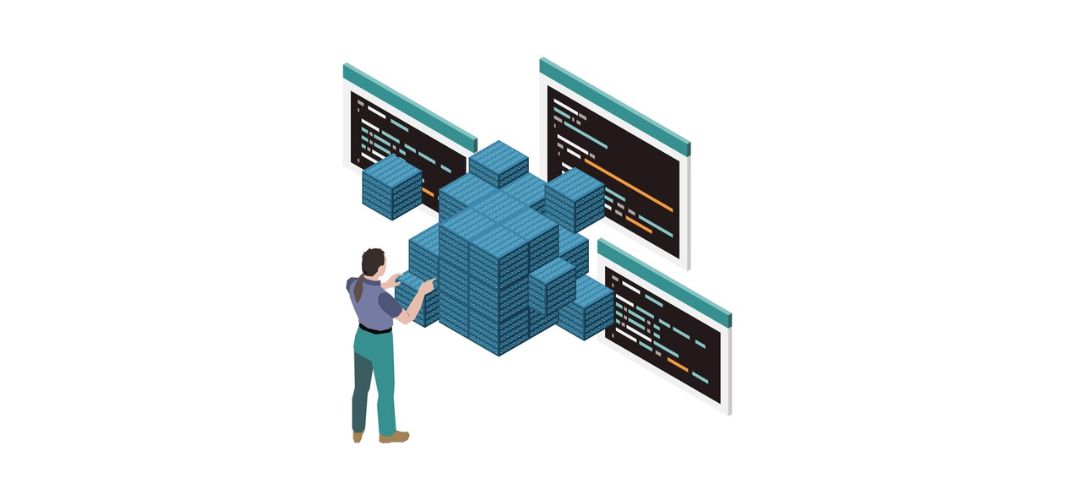SAP S/4HANA is SAP’s latest generation of enterprise resource planning (ERP) software on the in-memory SAP HANA database. It is a complete redesign of business processes and data models of legacy SAP R/3 and SAP ECC systems. For companies running legacy SAP systems, the question is whether to upgrade to S/4HANA to achieve better performance, new features and lower total cost of ownership.
Knowing the main differences between SAP S4HANA and previous-generation SAP systems can help businesses determine whether and when to migrate to this new ERP platform. This article examines the major differences in architecture, data storage, user experience, analytics, integration, deployment and costs.
Architecture Differences
The biggest difference between SAP S/4HANA and older SAP systems is in the underlying architecture. SAP S/4HANA is an application that can only run on SAP HANA, a real-time in-memory database for analytics and transactions. SAP R/3 and SAP ECC were legacy systems that were built based on traditional relational databases like Oracle, SQL Server or DB2 running on disk storage.
By eliminating aggregation tables, indexes and data redundancy, SAP S/4HANA uses a simplified data model stored primarily in memory. This allows much faster read and write times compared to the complex disk storage models of legacy SAP platforms. Analytics that previously took hours or days can be performed in seconds or minutes with SAP HANA.
The simplified architecture of S/4HANA consolidates processes, data and interfaces that used to require separate modules and complex integration with legacy SAP environments. It enables new levels of performance and simplicity that were not possible previously.
Data and Storage Model Differences
Legacy SAP systems were built around disk storage database models optimized for disk reads and writes. This requires aggregate tables data redundancy across modules and indexes for acceptable performance. The resulting data models were complex, with over 15,000 database tables prior to archiving.
In contrast, SAP S/4HANA uses a simplified data model optimized for in-memory computing. Its data model is unified across business functions and has a single source of truth. Since reading data from memory is extremely fast, redundant data is eliminated. Indexes only optimize disk storage, providing no benefits in the columnar in-memory SAP HANA database.
With SAP S/4HANA, analytics are now embedded directly in transactions utilizing Core Data Services (CDS) and business logic. Batch reporting layers required with legacy SAP systems are no longer needed. There is no longer a separation between online transaction processing (OLTP) and online analytical processing (OLAP) systems. This simplifies architecture, reduces data redundancy, and improves real-time operational analytics that were not possible previously.
User Interface Differences
SAP Fiori is the user interface (UI) technology underlying SAP S/4HANA. It provides responsive web-based UIs optimized for contemporary mobile devices. SAP GUI served as the primary UI for legacy SAP systems, with browser access secondary.
SAP Fiori introduces role-based UIs that aggregate workflows for specific jobs across tasks that previously required navigating across modules. Adaptive screens resize dynamically based on available screen real estate on desktops, tablets or mobile devices. SAP Fiori also enables voice commands, chatbots and other emerging modes of interaction.
The result is more intuitive, personalized and productive user experiences than the cumbersome navigation and rigid screens of legacy SAP UIs. Training on SAP Fiori is also much easier, given its similarity to common consumer web and mobile interfaces compared to old SAP GUI conventions.
Analytics Differences
One motivation for SAP S/4HANA is gaining business insights faster from ERP data than from legacy SAP analytics. This starts by embedding analytics directly in S/4HANA business transactions, eliminating batch reporting latencies. Business users then get live operational reports as part of their workflows rather than waiting for updates.
With SAP HANA powering S/4HANA, new types of analytics are possible, including geospatial analysis, predictive analytics, machine learning, and natural language query, which are not feasible with legacy SAP analytics. Movement of ERP data to separate data warehouses for reporting is no longer necessary with SAP S/4HANA thanks to available memory computing resources.
Finally, the SAP Analytics Cloud solution provides powerful data visualization, augmented analytics, collaborative planning, and predictive capabilities that exceed those of previous SAP analytics and business intelligence tools. The combination of SAP S/4HANA and SAP Analytics Cloud lets business users access, analyze and share live data faster than ever before.
Integration Differences
Legacy SAP systems had to be connected with many disparate external applications and data through integration middleware. Enabling end-to-end processes across technologies was complex because of separate modules, databases and legacy code. Traditional integration technologies included SAP Process Integration (PI), SAP Process Orchestration (PO) and SAP Exchange Infrastructure (XI).
End-to-end process flows are embedded across lines of business with SAP S/4HANA, requiring less external integration. Such an architecture shift makes it easier to connect to cloud apps and APIs. Integration with analytics systems is also easier since there is real-time access to live ERP data.
SAP S/4HANA natively supports modern integration platforms like SAP Cloud Platform Integration, API management, IoT connectivity and partner-packaged integrations. It also removes the dependency on the proprietary middleware that was previously necessary. SAP S/4HANA provides pre-built integrations that accelerate the connection of SAP S/4HANA to other cloud and on-premise systems.
Deployment Differences
SAP S/4HANA is the first major SAP platform that is built for in-memory computing and is meant to leverage cloud infrastructure scalability and flexibility. It can be deployed on-premises and public cloud, private cloud and hybrid models to achieve the balance between agility, control and costs. Legacy SAP systems were developed first for on-premise appliance or server infrastructure.
Cloud options now available with SAP S/4HANA include hyperscaler infrastructure from Microsoft Azure, Amazon Web Services, Google Cloud Platform and Alibaba Cloud. Multi-cloud is possible for disaster recovery. SAP S/4HANA can also run on the SAP Cloud Appliance Library for private cloud utilization. Hybrid deployments leverage both on-premise and cloud resources.
Thanks to standardized data models, SAP S/4HANA systems are also easier to implement. The SAP Activate methodology accelerates fit-to-standard deployment with agile techniques, reducing the customization typical for legacy SAP project implementations. This lowers costs and speeds ROI across various deployment options.
Total Cost of Ownership Differences
The lower total cost of ownership (TCO) of SAP S/4HANA is another major business driver for the adoption of SAP S/4HANA. The economies of scale for the functionality of integrated modules are achieved by consolidating the functionality across integrated modules. Real-time processing and embedded analytics also result in a reduction in the cost of data, infrastructure and administration.
IDC’s research of SAP S/4HANA showed that composite organizations, compared to legacy SAP systems, get an average five-year return on investment of $184 million. TCO improvements were due to reduced license fees, third-party database and middleware costs and administration expenses.
Transitioning to SAP Activate and streamlined deployment further lowers implementation costs by 40-50% over highly customized legacy SAP projects. The combined savings from lower TCO and faster time-to-value boost the overall ROI business case for most SAP customers migrating to SAP S/4HANA.
Summary and Recommendations
SAP S/4HANA is the future of SAP’s strategy and innovation roadmap for the next 10 years and beyond. It is a re-platforming of ERP for modern in-memory computing, cloud flexibility and real-time business requirements. Architecture, data, UIs, analytics, integration, and TCO are all vastly different from legacy SAP systems.
S/4HANA is the next logical step for most current SAP customers, as it improves performance, releases innovation, and reduces operating costs. It also removes the expenditure on old SAP systems and the risks of unsupported applications. Yet, the complexity and timelines for migration vary for each legacy SAP environment.
SAP offers tools such as Readiness Check and the Legacy System Migration Worklist to assess the effort. Partnering with experienced SAP migration consultants will also help smooth transition planning and execution. This helps balance move-to-S/4HANA priorities with maximizing the remaining value from legacy SAP investments.
With the 2027 deadline for ending mainstream maintenance on legacy systems fast approaching, evolving to SAP S/4HANA is a strategic imperative for most SAP customers. Comparing the differences in architecture, data, UIs, analytics and TCO makes clear the innovation and advantages SAP S/4HANA introduces. Migrating from legacy SAP platforms promises to accelerate business transformation and value for many years to come.



































